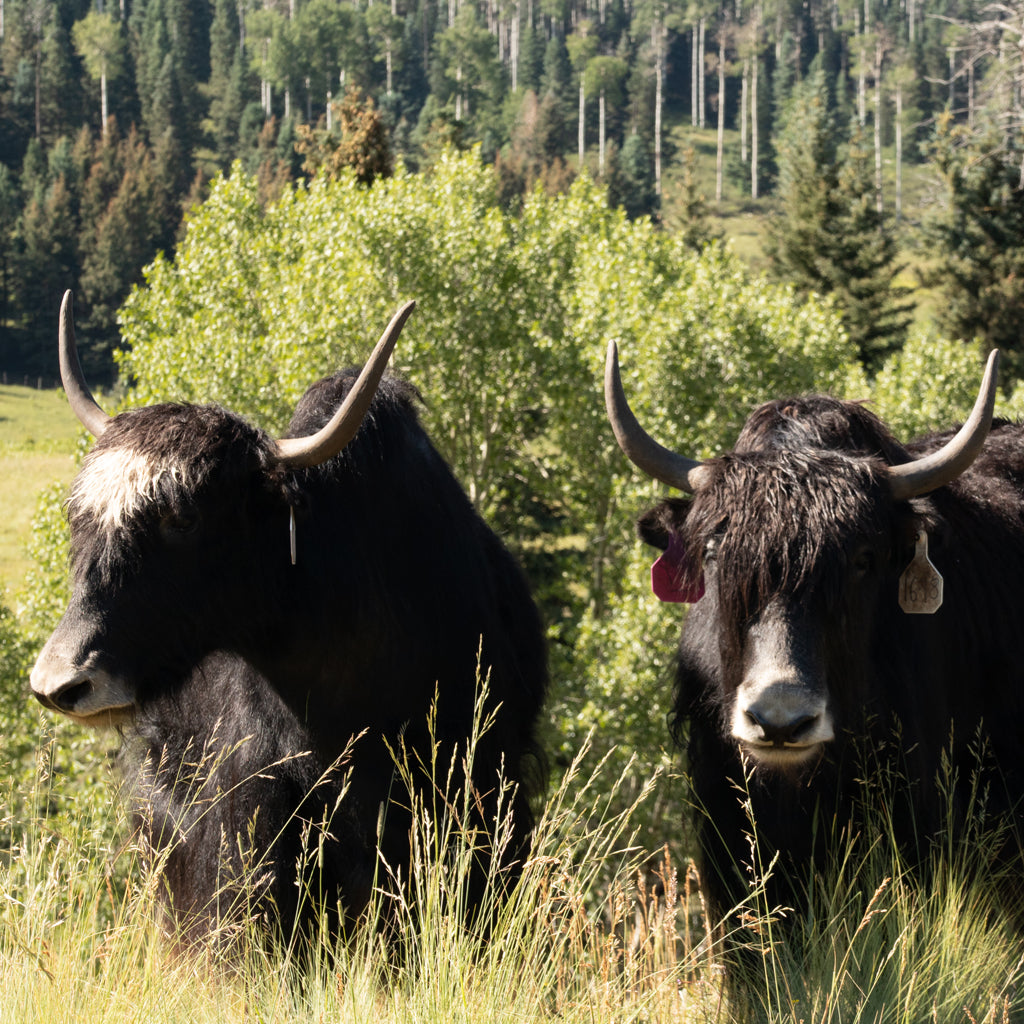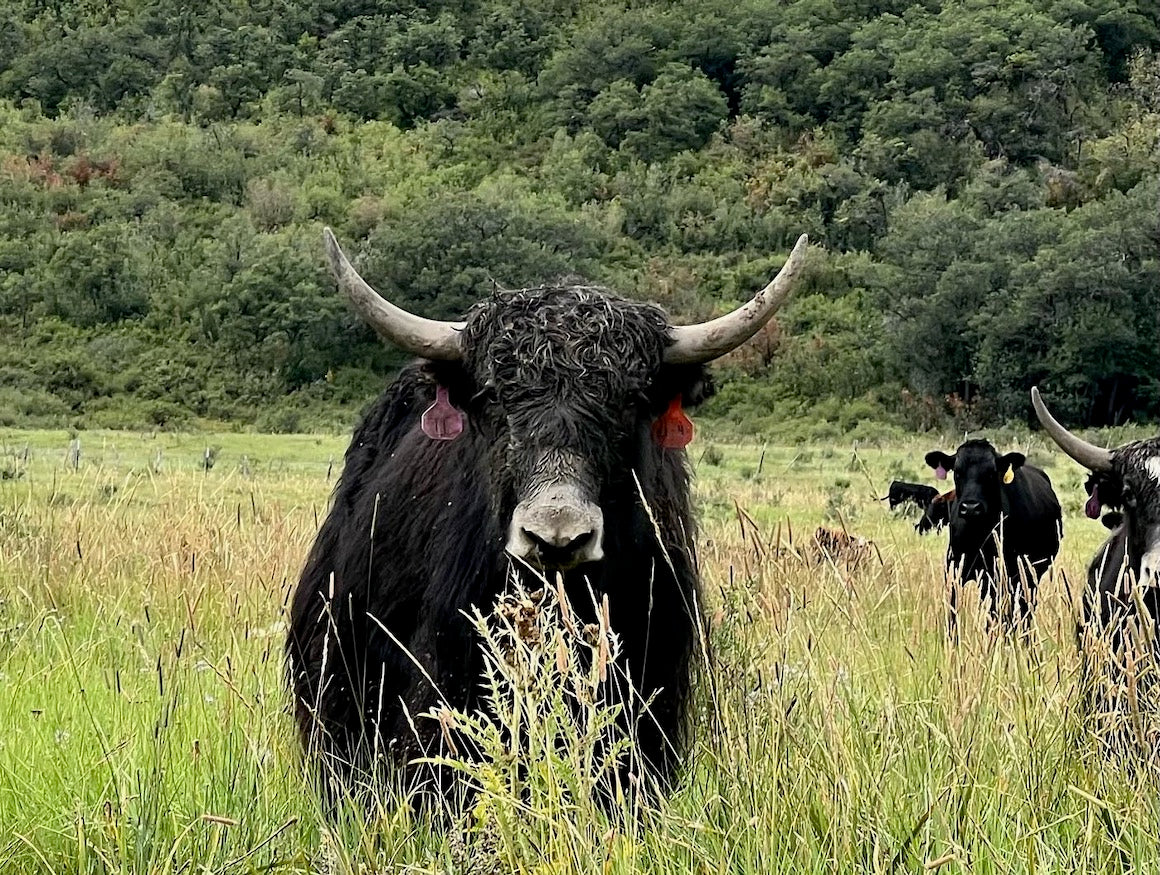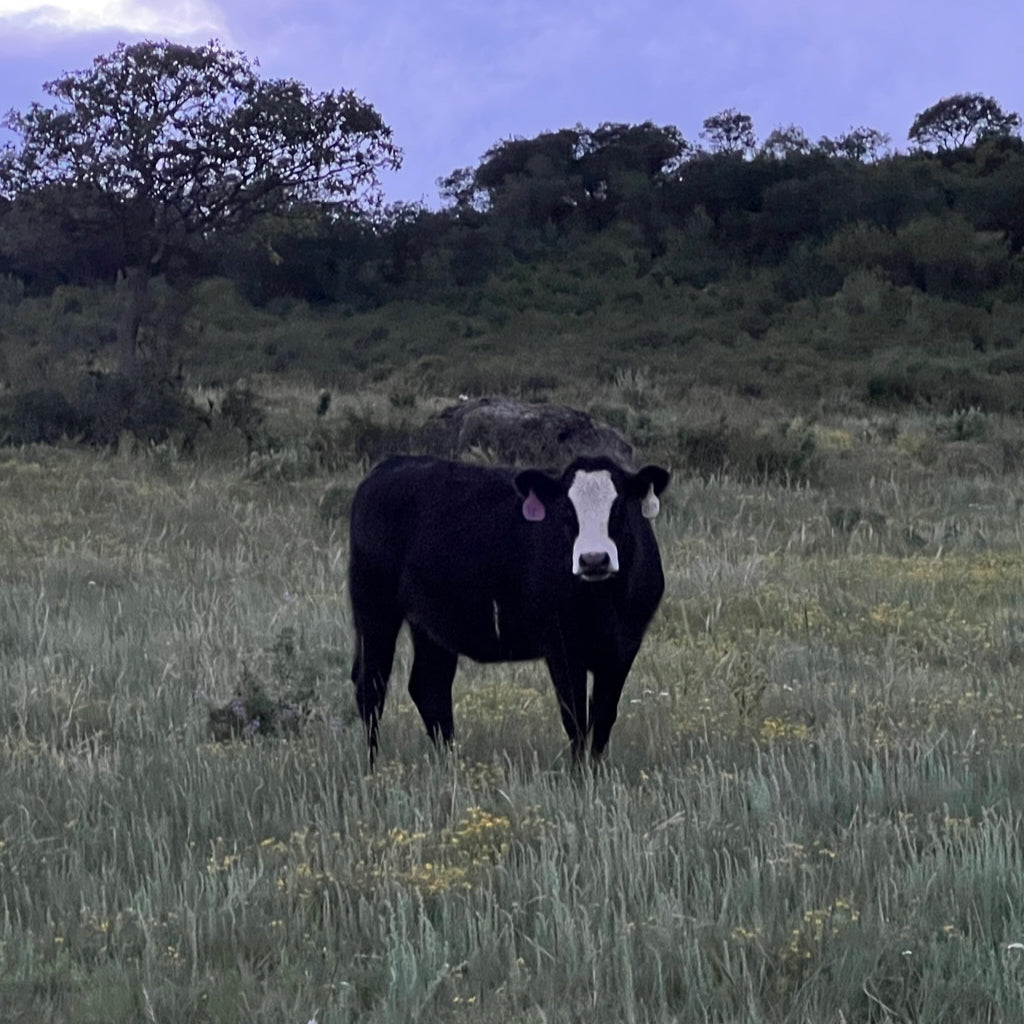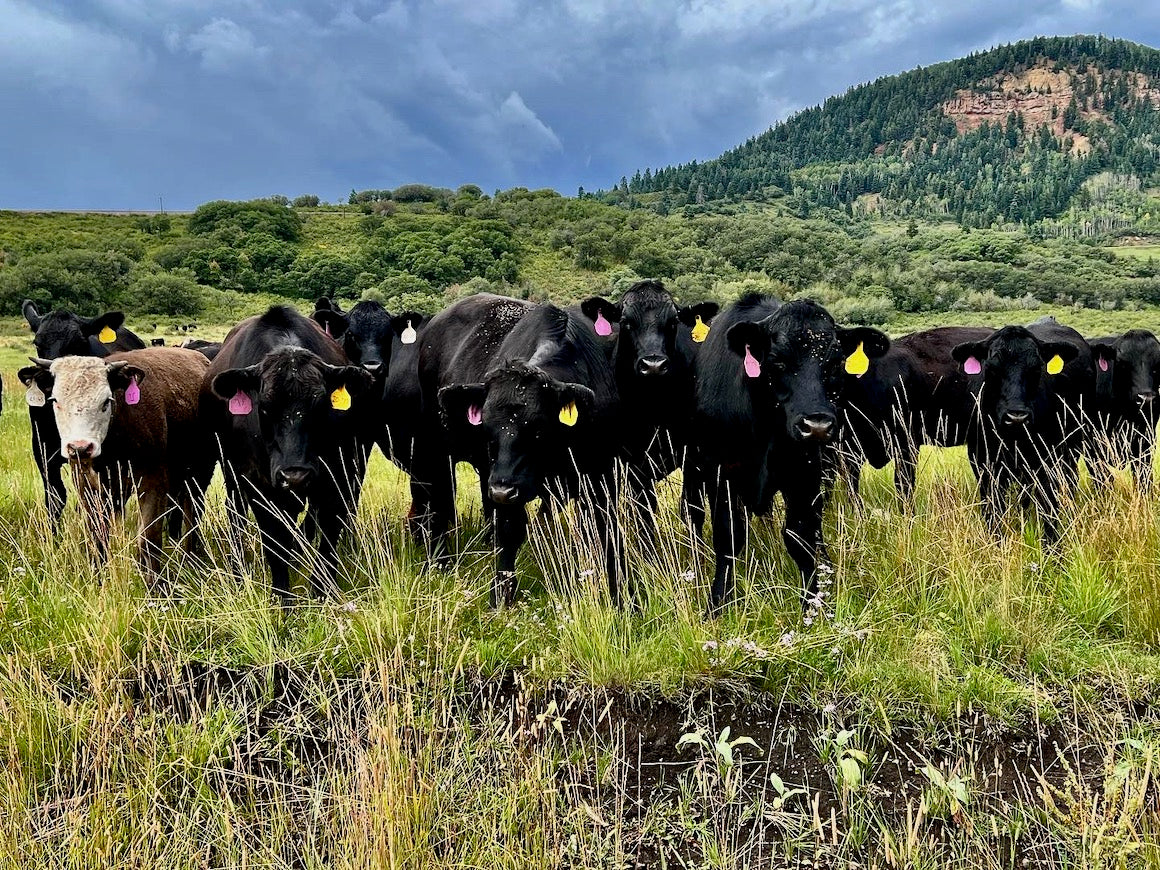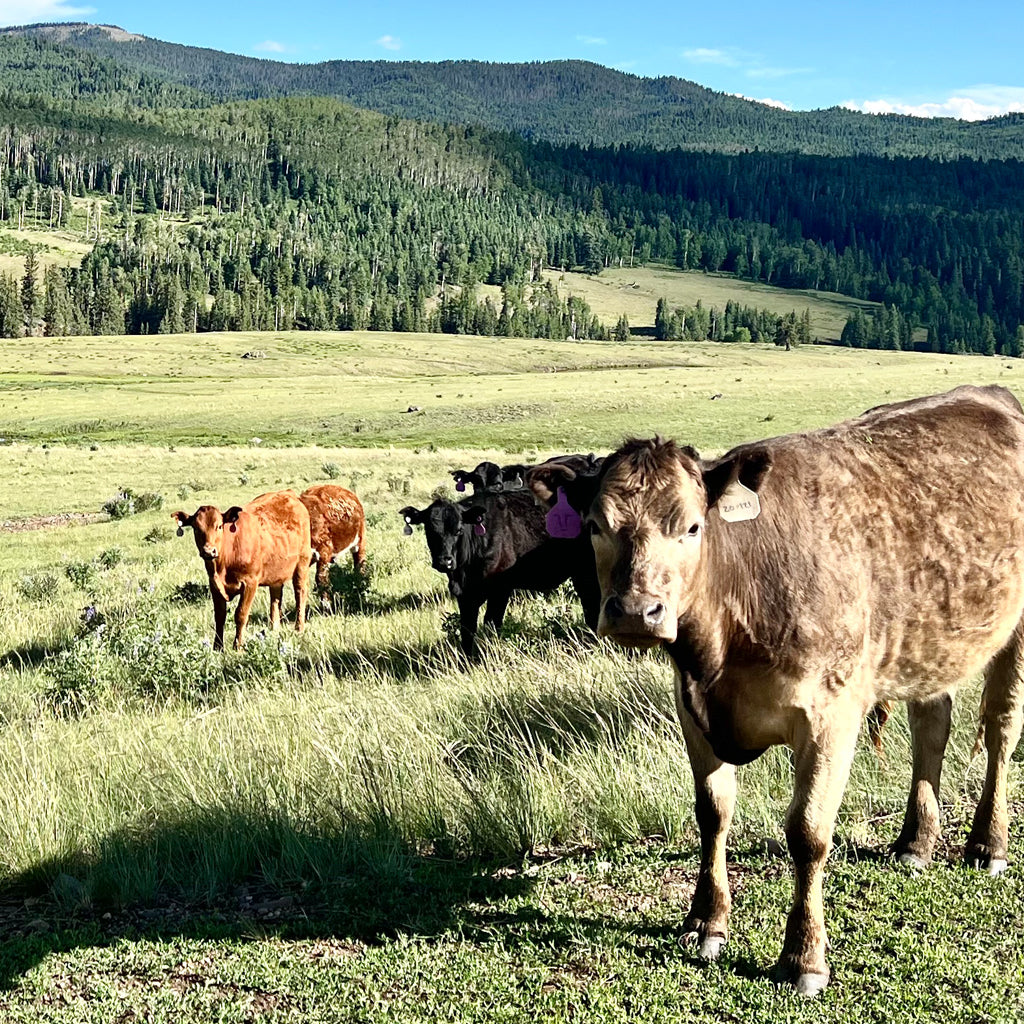Both our ranch and farm are exceptional locations to raise happy, stress-free animals. Wolf Creek Ranch’s valley sits at 8500’ north of Chama, New Mexico, and the peaks rise to 10,900’. Deep winter snows and monsoonal rains grant our grasses a unique and highly nutritional value for the animals, both wild and domestic. The Wolf Creek’s crystal clear waters begin barely eight miles from our ranch, giving it a freshness rarely found in water sources. Due to the ranch’s high elevation, our animals graze the grasses generally from late May into early October when we transfer them to our farm 10 miles south of Chama.
Throughout these summer months we utilize rotational grazing practices. Rotational grazing is one aspect of our holistic management.
Rotational grazing is an aspect of regenerative agriculture. It is a sustainable and conscientious approach to livestock grazing that involves moving animals systematically through multiples of pastures on a rotational basis to not only ensure but to improve the health and quality of the soils and grasses.
On both our properties we have divided our grasslands into several larger pastures, moving the livestock through these pastures every one to three weeks. While the animals are inside a pasture, our herder works with the animals every day to ensure they do not overgraze any one area. Such constant monitoring of the animals has not only improved the state of our soil and grasses but has also improved the well-being of our livestock because we catch and treat injuries and illnesses immediately.
Our El Barranco Farm is named after a small Hispanic settlement that once hugged the banks of the Chama River. Lincoln was president when my great-great grandfather purchased these lands. My grandmother received the farm as a high school graduation present in the 1930s when money was scare but land was plentiful.
Today our cattle and yaks spend the winter months on the farm’s hay fields enjoying copious quantities of hay, so they will remain healthy and stress free even in the harshest of conditions. The hay comes from our farm or neighboring farms, which further ensures healthy animals, as their gut biome is predisposed to their local food source.
Aspect to Excellent Meats:
The welfare of our animals is vitally important to us not simply as business owners but also as an ethically-minded family. Every day, no matter the weather, our team is monitoring our cattle and yaks for any signs of sickness or injury. Moreover, nutrient rich grasses, fresh waters, plentiful hay in the winter, and spacious lands upon which to roam are also critical to the health and well-being of our animals.
Triny is by far the most exacting butcher Robert has ever worked with to process our meats. I once asked Triny what made him such an exceptional butcher besides having processed meats for over 30 years. He simply replied, “It’s a pride thing.”
And his pride shows in every cut of meat that comes out of his shop.Triny individually hand carves every piece of meat and personally selects each cut. Such care is imperative for an excellent tasting steak for several reasons. Consistency is critical to an excellent steak or roast because the customer will always know that he/she will receive the most tender and flavorful meat available. Also, Triny takes care to ensure that the steaks are uniformly cut which allows for greater control of the cooking process. Finally, Triny ages all of our meats for 15-30 days, depending on the cut.
Robert and I are excited to have teamed up with Triny, as he is as demanding with his butchering as we are with the quality of our meat.
Do you remember your mother or grandmother talking about buying the family meats from her local butcher? My grandmother had many a story about her butcher —entering the store to a warm welcome and catching up on each other’s families — babies, children, weddings. Then onto the business at hand. Which selection would the butcher suggest to serve her guests that evening? What cut would be the best for a certain recipe? Often she would request the butcher to cut steaks in a specific manner, and she would return the following week for pickup.
We personally know our butchers, and Robert is regularly discussing with them specific ideas, points or options regarding individual cuts. Moreover, if a customer has a special cut in mind that we do not normally offer, we can easily fulfill that request because we have such a close relationship with our butchers. Our craft butchers take pride in every cut of meat that comes through their facilities, and every selection is hand cut and carefully crafted to their (and our) exacting standards.
Most of our yaks are bred and born on our properties. Robert, however, does purchase new bulls every few years to introduce different bloodlines into our herd. Our yaks spend summers on the Wolf Creek Ranch and winters on the hay fields of the El Barranco farm south of Chama.
Grunting ox (Bos grunniens) is another name for the yak due to its loud grunting noises. In Tibet only the male is called a yak, while the female is referred to as a dri or nak. In the west, however, we refer to both males and females as yaks. The animals are well suited to our high elevation due to their evolutionary adaptation to elevations from 14,000-20,000 feet in Tibet, Nepal, Mongolia, and Central Asia. Yak lung capacity is approximately three times that of cattle, and their red blood cells are smaller and more numerous than Bos taurus (cattle).
Robert purchases recently weaned, small frame calves only from neighboring ranchers or from local auction houses. Purchasing local animals is critical for two reasons: First, locally bred and born calves have microbiomes that are in-tune with the local vegetation, so they have greater resistance to illness and can also increase their weight more efficiently on our grasses. Second, working with and along side our community is an important part of who we are as a business. If it were not for our local ranchers and community members we would not be here. Their assistance and support is invaluable to us and our operation. For instance, it is not unusual for animals to jump the fence to “greener” pastures. If it were not for the eagle eyes of our neighbors and their assistance, often on horseback, it would be much more difficult to locate our wandering animals.
El Barranco is the name of a village that once sat upon these lands. My grandmother received this farm as a high school graduation present from her parents in the 1930s when money was scarce but land was abundant. Our yaks and cattle spend the winters munching the hay grown on these fields. Our grasses are irrigated from waters of acequias (ditches) that date back to the mid-19th century. El Barranco farm straddles the Chama River and Hwy 64/84.
The Wolf Creek Ranch sits in the mountains above Chama, New Mexico. During the summer months our yaks and cattle graze the rich grasses in the valley. Herds of elk live in the forests and meadows on the mountains. All the animals enjoy the fresh waters of the Wolf Creek that is also known for its technical fly fishing.

